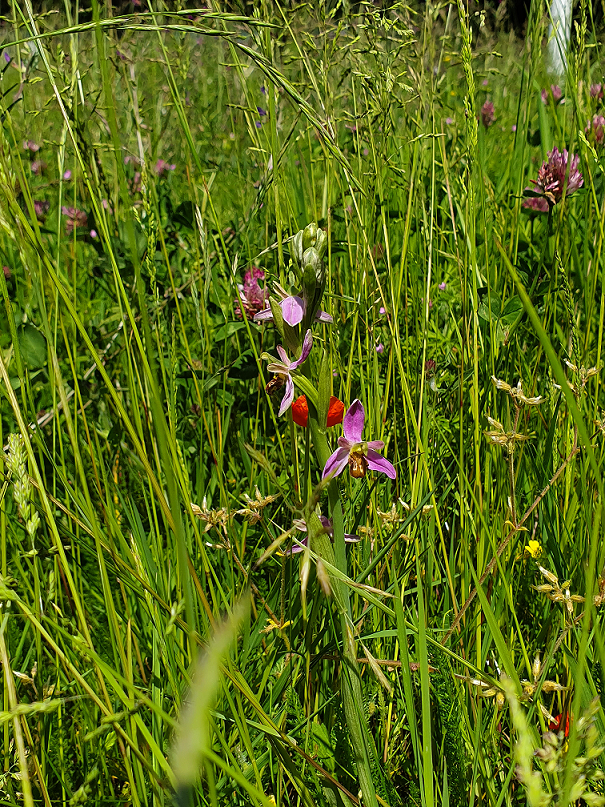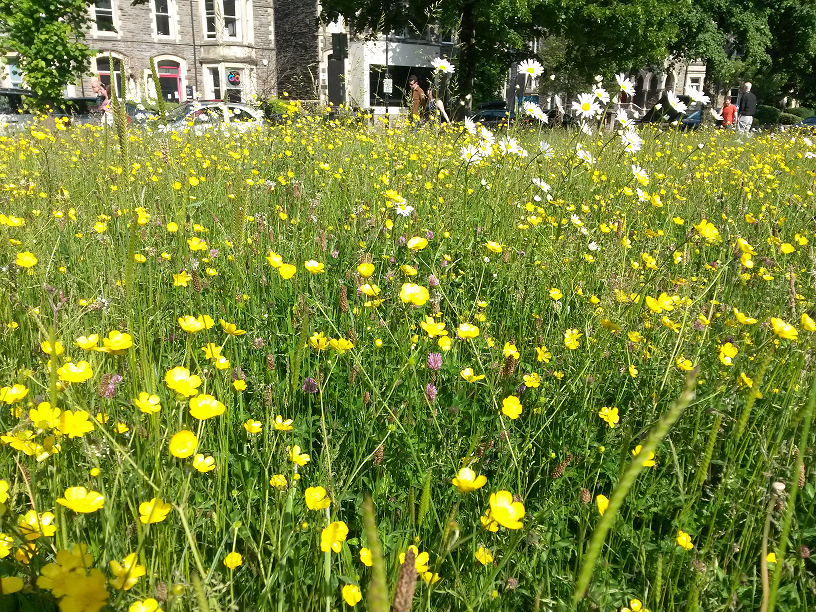The Urban Meadow at National Museum Cardiff
, 1 July 2023
This year we’re not only celebrating National Meadow’s Day on 1st July, we’ll also be celebrating ten years of our Urban Meadow at National Museum Cardiff. We are marking the day with the Celebration of Nature event at Saint Fagans National Museum of History.
Initial funding from the Cemex Community Fund has allowed the meadow to go from an area of “species poor amenity grassland.” (Biodiversity Survey, AC-MW, 2009) to the creation of an urban meadow with over 56 plant species recorded in the last survey (Biodiversity Survey, AC-MW, 2021).
On the Urban Meadow plants such as Common Bird’s-foot-trefoil (Lotus corniculatus), Oxeye Daisy (Leucanthemum vulgare), Lady’s Bedstraw (Galium verum) and Red Clover (Trifolium pratense) add colour to this part of the city every summer. Over the ten years they have been joined by Mallard ducks looking for some shelter, and even a grass snake has been spotted. Exotic looking Bee Orchids (Ophrys apifera) appear in flower in late May/early June every year too. By July the meadow is buzzing with insect life and birds looking to eat those insects and seeds. There are honey bees (Apis mellifera) who live in hives on the Museum roof. It’s only a short flight for them to collect nectar and pollen from the Urban Meadow during the summer months.
During the Covid 19 lockdowns, the meadow carried on without many people to see it or staff and volunteers to help maintain it. This has meant that some of the grasses have taken over. Smaller flowering plants can’t compete against the more robust grasses. Meadow foxtail (Alopecurus pratensis), Cock’s-foot (Dactylis glomerata) and Timothy (Phleum pratense) may all be native grasses, but we don’t want too many on the meadow. One corner of the meadow is damper than the other three corners and Yorkshire-fog (Holcus lanatus) has dominated here. Not one of the taller grass species, Yorkshire-fog only usually reaches 1m high, but the other grass species can reach 150cm tall.
Grasses are usually wind pollinated and so don’t need to have bright coloured flowers to attract insects for pollination. To let the flowering plants have some space to grow we are going to sow seeds of Yellow-rattle (Rhinanthus minor) this autumn. This annual plant is a parasite on Grasses (Poeaceae) meaning it gets nutrients by penetrating its roots of the grass. Many meadows may need Yellow-rattle seed sowing this autumn because the grasses have coped better with the hot weather than the smaller brightly coloured plants. The seeds are sown in the autumn because they need to sit in the soil during the winter and experience the cold to germinate. The yellow flowers appear in spring, followed by seed pods which ‘rattle’.
The Urban Meadow hasn’t just been an opportunity to increase biodiversity at Cathay’s Park by making it a nice place for plants and animals to live, it has helped people too. Staff and volunteers have been joined by many local school and community groups who have visited the meadow to learn about this city habitat. They have helped us to sow seed and plant small plants, mow and generally tidy up. One group even found a horseshoe! Lucky perhaps for the person who found it, but not for the horse who lost it!

